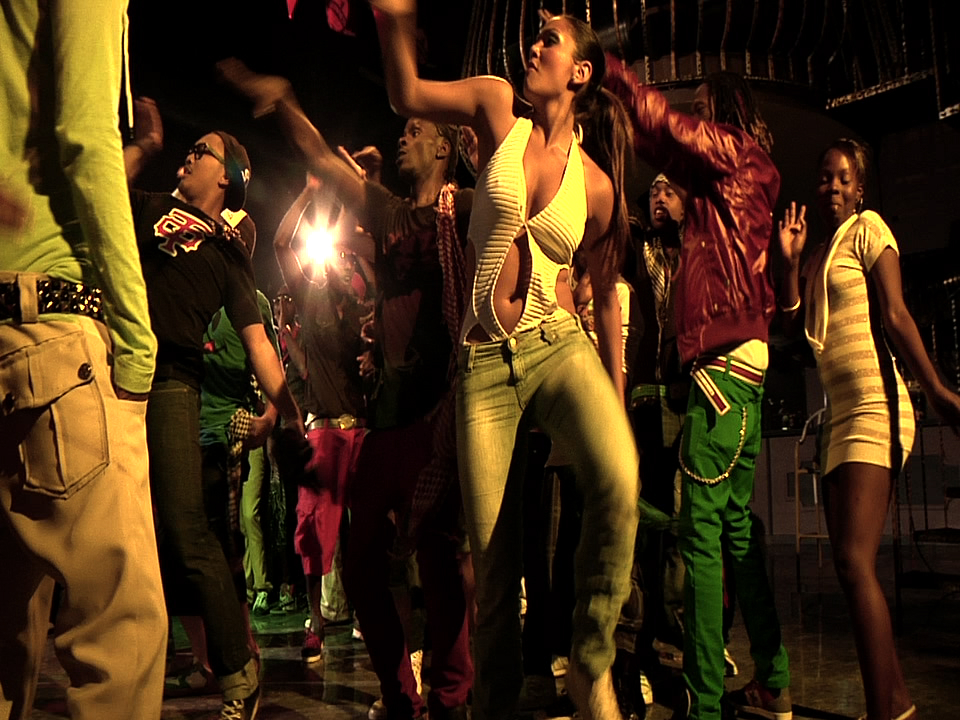Dance style can speak volumes for the culture in which they are founded. Dancehall arose on the streets of Jamaica and became a defining aspect of youth culture. On her WEBSITE for her photography and writing, Beth Lesser explains Dancehall culture from her trips to Jamaica since the 1980s as unimaginable. It was an unknown phenomenon to North America, yet in Jamaica it was unavoidable. This culture is shaped from past oppression, current politics, fashion, music trends, current pop culture, and even itself. Dancehall is constantly evolving and developing. It has clear influences on dance style all over the world, including Kwaito in South Africa. It has also exploded into a well known and globally popular style with Dancehall artists touring all over Europe and North America and featured commonly on shows such as So You Think You Can Dance.
Fashion plays a large part in Dancehall culture as well as every culture. It is another facet of life that is constantly evolving.
Lesser remembers how politics influenced fashion in Jamaica in the 1980s. She writes, "Political tensions were still high after the troubles of the 1980 election, and you had to be careful what colours you wore in certain areas. Black and red meant you were a socialist; if you wore green, you were a Labourite."

Fashion has had an impact on other postcolonial nations besides Jamaica. In her book, Couture and Consensus: Fashion and Politics in Postcolonial Argentina, Regina Root comments on how the revolution in Argentina in 1810 caused an outbreak of creativity and taboo dress sense in order to disrupt authoritarian practices in the brand new nation. She talks more about her book in a podcast for the Library of Congress, free on iTunes.
Discussion Questions:
- The
“Dance-U-Mentary” shows several different dance moves performed by groups.
Some of these moves are named for certain people, revolutionary movements,
and distinct actions. It has been argued that these dance moves encourage
certain behaviors in youth such as gun violence, rape, and so on (Stanley-Niaah 761). Based on Stanley-Niaah’s argument,
do you agree or disagree with the above statement?
- Dancehall
and Kwaito originated in completely different parts of the world, Jamaica
and South Africa respectively. However there are many connections between
the two including themes, historical value, and emphasis on a young
audience. How do both of these styles represent diaspora identities that
are present in these cultures?
Fact:
Dancehall music is becoming progressively more globalized. Besides the touring of popular artists and dancers, Usain Bolt performed several moves during his victory lap after winning a gold medal in the 2008 Olympics, which demonstrates the reach of this culture.
Dancehall music is becoming progressively more globalized. Besides the touring of popular artists and dancers, Usain Bolt performed several moves during his victory lap after winning a gold medal in the 2008 Olympics, which demonstrates the reach of this culture.
Works
Cited
Morgan, Candace. “Early Globalization and The
Roots of Dancehall.” Mount Holyoke College, 12 April 2012. Web. 16 April 2014.
Recommended Literature:
“Negotiating a Common Transnational Space” by Sonjah Stanley-Niaah
Recommended Literature:
“Negotiating a Common Transnational Space” by Sonjah Stanley-Niaah

No comments:
Post a Comment